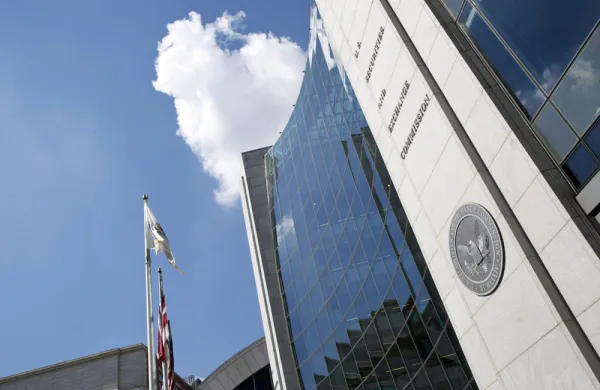All investment firms registered with the Securities and Exchange Commission have to share with the regulator the brochures that they give to existing and prospective clients. The literature must be written in “plain English” and include basic information about the firm, including the fees it charges investors.
However, those fees are often not what all of their clients pay.
Included in virtually every Form ADV Part 2 brochure about fees and expenses is a caveat: The firm has the right to make bespoke arrangements with other clients.
The special treatment might be something as simple as a discount — and could be warranted. Some investors are willing to invest in a fund sooner than others, or invest much more, so asset managers give them a break. Other clients might be co-investors or have some other strategic relationship with the firm. Regardless, most of those agreements — which are detailed in so-called side letters — were kept private between each client and the asset manager.
Until now.
On Wednesday, the SEC adopted the most significant set of rule changes to private investment funds since the Dodd-Frank Act in 2010. And in addition to mandating new quarterly disclosures, audits and other changes, it blew a whistle on side letters.
The new rules forbid private funds from giving “preferential treatment” to some investors that might have a material negative effect on others. For example, giving some investors a heads up on information so they could seek redemptions before other limited partners. The rules also require funds to offer the same terms to current and prospective investors in a fund. In other words, the content of side letters can longer be kept a secret. The changes will substantially alter how general and limited partners engage each other — and there is far from a unanimous opinion on who will ultimately benefit.
Public and corporate pension funds, endowments, hospital systems, and other big investors have always leveraged their size to get better terms with asset managers. A relatively small amount of money for a pension fund could be a massive boost for an asset manager. Firms are willing to make concessions to win big mandates — especially if they don’t have to share those with other investors.
Now that every investor will get the same terms, the dynamics will be different.
“The change in the requirements for disclosure of fee breaks is likely to impact negotiations,” said Kathryn Furman, a partner and the head of the private funds and alternative capital practice at law firm King & Spalding.
Investment firms, for example, are likely going to push back more on fee discounts, since it will be harder for them to narrow the group of investors getting the discount. They don’t want to open a flood gate of lower fees.
But Furman and others don’t expect that the new requirements will eliminate special fee arrangements. And while the biggest investors might get more resistance, they are still going to be able to negotiate, to the benefit of smaller investors.
“The increased visibility and understanding of available discounts to fees may enhance the ability of certain limited partners to negotiate for lower fees. On balance, the new rules favor smaller limited partners, but we would expect the larger limited partners to remain in a position to obtain fee discounts consistent with prior funds,” Furman said.
Andrew Park, a senior policy analyst at Americans for Financial Reform, a nonpartisan, nonprofit group that advocates for “a fair and just financial system,” believes that all investors will ultimately benefit from the new rules.
“Since investors, rather than working together on key asks, are all operating with various degrees of incomplete information and at times are pitted against one another, the rule ensures everyone is on the same page, shifting the balance of power back closer to investors over the private fund advisers,” Park said.
But attorneys representing hedge funds, private equity firms, venture capitalists, and other asset managers don’t believe the side-letter rules will have the positive impact intended.
Offering the same terms to all investors could result in less attractive terms overall, which will cause institutions to write smaller checks to funds, according to Peter Greene, co-head of the investment management group at Schulte Roth & Zabel. And having smaller investors will impact the stability and flexibility of some private funds, especially newer ones, he added. Additionally, offering better terms to all investors will increase costs, heighten the barrier to entry for new funds, and further limit investors’ choices. “The rule has potential to harm large investors, smaller investors, and managers,” Greene said.
The new rules also increase compliance burdens and will change how asset managers and investors interact, said Holli Heiles Pandol, the public policy counsel for Carta, an equity management software and service provider that also partners with venture capital firms. Until funds begin preparing to comply, it’s hard to know who the changes will disproportionately impact. But institutional investors will still have their advantages of their size and credibility when negotiating investment terms, she said.
And the biggest managers will still figure out ways to navigate the more stringent side-letter disclosures, according to Mazen Jabban, founder of Vidrio Financial. He knows what it’s like to haggle over private fund terms, having managed a fund of funds before founding the portfolio management platform. Jabban said that if managers don’t want to offer all investors the same things, they will create different funds, each with their own fees, liquidity terms, and ticket sizes.
Before the final private fund rules were adopted, investors and asset managers both expressed concerns about what the new side-letter rules would mean for co-investments, minority investments made by investors alongside private equity firms.
Co-investment agreements already often included transparency. Now, the process of informing all other potential co-investors the specific terms could detrimentally slow the investment process in some cases.
“The final rules do not flatly prohibit allocating fees and expenses to a portfolio investment on a non-pro rata basis among multiple clients (as the proposed rules would have), but they do set up some barriers that may impact how general partners approach co-investments,” said Furman of King & Spalding. “The flexibility the adopted rules provide as compared with the proposed per se prohibition may be helpful, but we will need to see how the market develops and how the SEC staff’s practical application of this aspect of the rule develops, in examinations and otherwise.”








